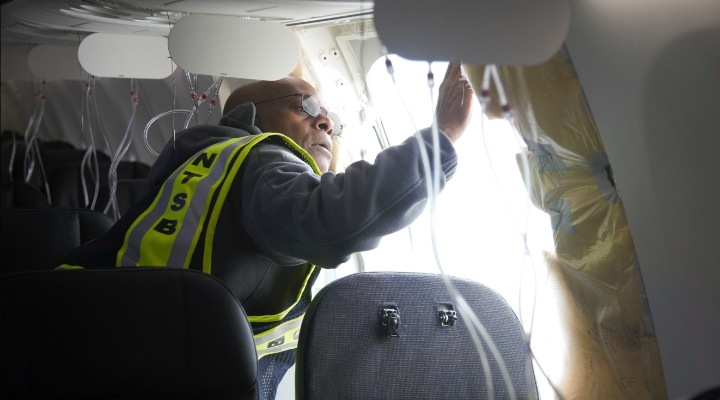
A new race is brewing in the telecommunications industry—the pursuit to provide direct-to-cellphone technology to wireless customers. In a recent development, SpaceX launched its first set of Starlink satellites capable of beaming phone signals directly to smartphones.
This technology carries significant implications for global wireless connectivity, eliminating the need for traditional cell towers and eliminating dead zones around the globe—something existing terrestrial cellular networks are unable to offer.
Wireless carriers in the U.S., Canada, and other parts of the world, are rushing to partner with SpaceX and other satellite service providers to offer this new technology. Investors looking to tap into this emerging market can keep a close eye on these names.
Leading U.S. wireless provider T-Mobile USA TMUS has substantially expanded its geographic footprint. It currently serves 73 million postpaid and 21 million prepaid phone customers, around 30% of the U.S. retail wireless market.
T-Mobile recently announced partnership with SpaceX which launched the first set of Starlink satellites with direct-to-cell capabilities. This is part of the wireless carrier’s Coverage Above and Beyond initiative, which aims to bring seamless cellphone connectivity across the U.S., including the remote locations unserved by traditional cell providers, knows as dead zones.
“T-Mobile’s strong brand and reputation, coupled with its strong spectrum position, should drive strong revenue and profit growth over the next couple of years,” says a Morningstar equity report, noting that the firm will continue to deliver stable cash flow over the longer term.
Having acquired rival Sprint, T-Mobile now operates in an oligopolistic market with comparable spectrum positions as rivals Verizon and AT&T. This “will limit the competition for new licenses in the future and push each firm to remain disciplined with network investments,” says Morningstar equity analyst Michael Hodel.
T-Mobile’s turnaround over the past decade is among the most impressive we’ve seen in the global telecom industry. Over the years, the carrier “masterfully pursued additional high-quality spectrum and deployed new wireless technologies, dramatically improving network performance with both better geographic coverage and capacity,” says Hodel, who pegs the stock’s fair value at US$165.
Canadian telecom giant Rogers Communications (RCI.B) is the largest wireless service provider in the country with over 10 million subscribers or a third of the total market. In addition to the wireless business, which accounts for over half of total revenue, Rogers' cable segment provides about 40% of total revenue after acquiring Shaw. Rogers' media unit owns and operates various television and radio stations and the Toronto Blue Jays.
The operator recently tied up with Elon Musk’s SpaceX and another U.S.-based satellite service provider Lynk Global to offer direct-to-device service, which connects satellites to everyday smartphones.
“Rogers Communications has ramped up investment in its wireless network in recent years, [and] since 2022, has had the strongest wireless business in Canada,” says a Morningstar equity report, stressing that the company will maintain its leadership position owing to industry tailwinds.
“With Canada’s policy to keep immigration high and allow in other foreign workers and students, Rogers is well positioned to keep expanding its wireless subscriber base,” says Morningstar equity analyst Matthew Dolgin.
The carrier’s narrow economic moat is underpinned by efficient scale and cost advantages in its wireless and wireline businesses, about 60% and 26% of total sales in 2022, respectively.
Rogers has averaged an 11% return on invested capital for over a decade, and while wireless competition will intensify in coming years, “we still project it to average 10%-11% ROICs through 2026,” says Dolgin, who appraised the stock’s fair value at $78.
One of the Big Three wireless service providers in Canada, Telus (T) boasts nearly 10 million mobile phone subscribers, constituting about 30% of the total market. It has leadership position in the western Canadian provinces of British Columbia and Alberta, where it provides internet, television, and landline phone services.
Last November, it became the first Canadian operator to test satellite connectivity to conduct voice calls, in collaboration with satellite service providers TerreStar and Skylo. The company reportedly plans to roll out smartphones with 5G satellite capabilities to customers this year.
While Telus’ wireline unit is its best business and the one most likely to drive future returns, “we also see Telus with strength in its wireless segment,” says a Morningstar equity report, adding that the carrier will remain one of the leaders in a very competitive market.
Telus has a network-sharing agreement with BCE which makes the service it provides second to none, the report adds.
Telus' narrow moat is built on efficient scale and cost advantages in its wireless business and efficient scale in wireline. The company’s adjusted returns on invested capital have averaging about 7% over the past three years, versus 10%-11% in the preceding decade. This weakness is attributed to the firm participating “in multiple big wireless spectrum auctions and accelerated capital spending to rebuild its fixed network with fiber,” says Dolgin, who puts the stock’s fair value at $33.








.jpg)













